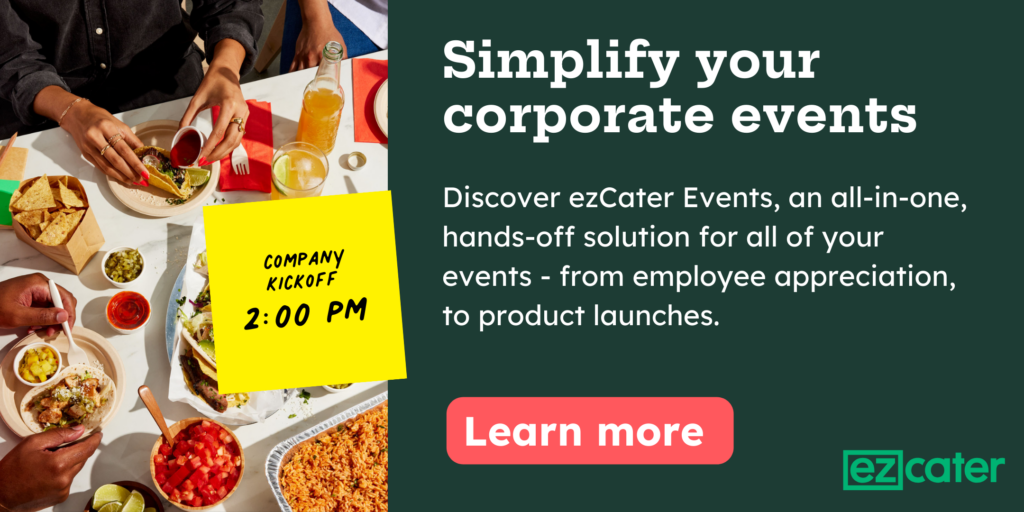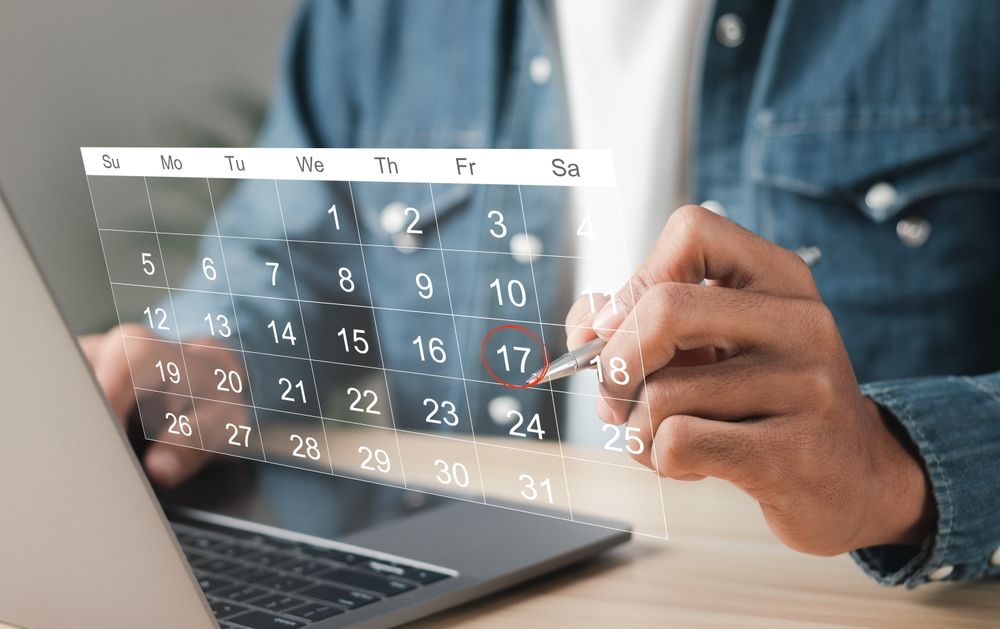Planning corporate catering events can be overwhelming – especially when it’s not just something you’re doing for friends or family, but when it’s your job (or at least part of your job). All eyes are on you, and every detail can feel like a make-or-break moment.
It’s ok. We’ve got you. Before you plan your next big company meeting, office party or even a full-blown conference, take a look at these time-saving (and nerve-calming) tips for corporate catering and event planning.

1. Figure out your purpose and concept

Before you do anything, you’ve got to know your why, right? So get your team together to define the purpose of your event and who you’d like to attend. Once you’ve decided why you’re hosting, start brainstorming ideas to make your event unique. Cocktail hours may be great for networking but not appropriate for recruitment purposes or onboarding, which may be better suited to a lunch gathering. Balance your intentions with attention-grabbing ideas for the best results.
To save time, start by asking yourself these questions:
- Why are you hosting this event?
- What are you hoping to accomplish?
- What is your brand?
- What do you want your audience to leave with?
2. Set your catering event budget
Your budget will limit the kind of vendors you can bring on board, so you’ll want to know how much money you’ve got to play with. Keep things simple by setting your event-planning budget well in advance and sharing it with anyone who’ll be using it. You may need to adjust your vision, but revising early on will avoid the sting of going overboard and scrambling to cut costs last-minute.

3. Find the right venue
Your venue isn’t just about the atmosphere. It will affect how many people can attend and which caterers you can use. Remember to ask about capacity, and find out if your venue limits you to specific vendors. Also, scout driving distances, ease of public transportation, and parking — your guests should be able to easily attend.
Pro tip: check where other industries host similar events to narrow down venue options. Finding the right venue early will make the rest of the catering planning process that much easier.
4. Let everyone know you’re hosting

Once you have a location, you’re ready to let people know about your event. Creating an event homepage can help with ticketing, tracking RSVPs, and organizing vendors you need, including your caterer. Though it takes some time to set up, this will make event management much simpler.
When your event page is up, send out emails or printed materials to generate excitement. Keep your page updated with food and activity plans so guests know what they can look forward to.
5. Start your vendor search early
As soon as your guests have been notified, it’s time to find the perfect caterer. Look for vendors that can deliver to your venue, provide the right food, and stay within your event planning budget.
ezCater’s built-in budget controls make it easy to avoid overspending. Plus, catering-specific reviews mean you can order your food with confidence.
6. Don’t forget to entertain
With food settled, turn your attention to entertainment. Providing some form of program or hiring performers will keep your event interesting and prevent awkward mingling. Whether you educate or go for fun is up to you.
Decide if you need keynote speakers, music, or a unique performance. At some corporate catering events, the food is the entertainment. Think outside the box and look through event industry publications for inspiration, such as the Meeting Professionals International blog that has a ton of event planning resources.
7. Make sure your guests can get there
Your catering event planning will be wasted if your guests can’t get to you. As guests RSVP, they should know how to get to your venue. Keep the address listed on your event’s homepage — with added directions, just in case. Let them know where the closest parking lot is, if parking validation is offered, and how to get there by public transportation.
Save yourself confusion later by giving your caterers directions when you book. That way, food won’t be on your list of last-minute mishaps. Or partner with ezCater to access award-winning service in seconds.
8. Prepare an event day team
Assemble a team for the day of the event. Determine what tasks each team member can be most successful with and delegate with those strengths in mind. Then, craft a catering event planning guide to provide them with timelines, locations, and any other relevant details. They’ll be empowered to run their own schedule and you can take one more thing off your to-do list.
9. It won’t go according to plan — and that’s okay
Catering planning is never perfect. Don’t be afraid to speak up if something isn’t right during setup, but don’t let minor details get you down. Consider creating an event supplies kit to handle last-minute adjustments. Include items like a phone charger, scissors, and tape so they’re right at your fingertips when you need them.
When the doors open, trust that you’ve delegated tasks to your team as necessary. As the event unfolds, check on your guests and make sure the food and music, as well as cleanliness, are going strong. Don’t forget to enjoy your hard work!
10. Learn from the experience
After the event, get your team together and review how it went. Don’t be afraid to talk through your failures. Discuss guest feedback and make a note of any changes to simplify the next event planning process.
Ready to start planning corporate catering events? Visit ezCater today to find catering partners that are sure to satisfy your guests.









